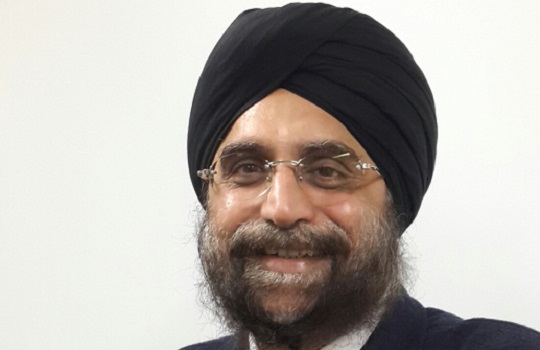
Bank Danamon’s Chief Risk Officer speaks with FST Media about how to balance a social media presence with the risk of reputational damage.
FST Media: How significant of an issue is fraud detection and what are Bank Danamon’s greatest challenges around regulatory compliance and reporting in the next five years?
Ahluwalia: Fraud is a very significant risk in the Indonesian banking context. In recent times, the industry has seen fraud trends emerge in the liabilities business, given that most banks have tightened up fraud detection in the lending areas. We have a detailed anti-fraud strategy that covers the entire fraud-control cycle, from monitoring and prevention to detection and deterrence. At the Head Office level, the fraud team’s role is to set up a framework and strategy and coordinate anti-fraud activities through the business level fraud-detection teams. This effort is supported by a continuous communication stream through email blasts and fraud videos, as well as coordinating and cooperating with police and reinforcement of our zero tolerance to fraud at every internal forum.
We have adopted technology to monitor “through the door” fraud applications, as well as transaction monitoring. We maintain close contact with the regulators and peers within the industry, to ensure that there is adequate dissemination and sharing of relevant fraud-related information.
FST Media: What challenges do emerging social and digital technologies represent to the management of risk at Bank Danamon?
Ahluwalia: There are over 75 million social media users and over 100 million smart phone users in Indonesia, making it one of the top 5 social media markets in the world. With this in mind, in 2014 we launched our mobile application, ‘D-Mobile’, which catered to the use of social media for banking transactions. The application allows our customers to send money through social media and the recipient can collect the money through cardless withdrawal in one of our specially-marked ATMs. In addition, the application has features such as augmented reality and personalised photo, among others.
However, every new foray into technology has inherent risks, including vulnerability through hacking. For our mobile banking application, we have industry-standard security such as an extended SSL certificate, reverse proxy BIG IP, secured two factor authentication and embedded software tokens. At Bank Danamon, we follow industry standards, including regular testing by security experts, compliance with global IT and Indonesian Central Bank standards, and we continuously benchmark to ensure full safety for our customers.
FST Media: How do you balance supporting a social media presence with the risk of reputational damage?
Ahluwalia: Social media monitoring is not just about reputational risk management, but brand building as well. When a consumer says something negative it impacts our brand, but if we respond quickly we are seen to be a responsive company and that can lead to increased customer loyalty. Of course the foundation of this is based on the soundness of our inherent processes as well as our ability to swiftly identify the problem and rectify it.
At Danamon, we have an established social media strategy which includes assignment of accountability to various stakeholders. The social media plan includes metrics, objectives, goals and purpose. We have set up policies and procedures for the use of social media for all employees, to ensure they understand and follow the rules. We closely monitor for any negative information in social media and, update senior management on a daily basis, regarding any references to the bank on social media.
FST Media: What are your key IT investment priorities in the next 12 to 18 months?
Ahluwalia: On the risk side, our main focus for investment in 2015-2016 will be to support the implementation of the Basel norms, starting from the development of a bank-wide data warehouse and credit risk models. On Market and Liquidity risk management, we will continue to focus on our current ALM system to support dynamic measurement and fund transfer pricing. We have a mature Operational Risk system developed in-house, and we will continue to expand its capabilities to eventually cater to AMA requirements.
Apart from the above initiatives, we are implementing a Loan Origination system for the wholesale business.
FST Media: What steps will Bank Danamon take to enhance their Conglomerate Integrated Risk Management?
Ahluwalia: This is a very proactive step undertaken by the Indonesian banking regulators. The Bank, including our subsidiaries, already has a framework for integrated risk management. This is stipulated in the Bank’s Enterprise Risk Management Policy, which is also used as a guide for the establishment of subsequent business policies and procedures by each line of business, support function and subsidiary. This also serves as a guideline for risk appetite and risk limits. The existing integrated approach to risk management enables the Bank to manage the various risks, as defined by Bank Indonesia and Indonesia’s Financial Services Authority, the Otoritas Jasa Keuangan. Each of our subsidiaries has their own risk management framework, including a charter that follows on from the ERM Policy.
With the recent guidelines from regulators regarding integrated risk management for conglomerates, some changes need to be made to be compliant. There are additional risks to be managed and monitored, such as inter-related company transactions and insurance risks. In addition, each subsidiary is required to develop its own risk profile, which is then to be consolidated into the Bank’s overall risk profile. We need to align the charters for the Risk committees at each entity level, in line with these regulations.
FST Media: How do you ensure data consistency across all reporting requirements?
Ahluwalia: Data quality is an especially acute challenge. Without consistent and reliable data, accurate reporting and sound decision-making become irrelevant, because the ability to process and analyse data depends on the quality of the data. In addition, the ability to accurately measure and manage enterprise-wide risk management would be virtually impossible without reliable and consistent data.
Thus, it is essential to have a centralised data management system or data pooling server with a single common definition for each item of data, as it provides great advantages in producing timely and correct data across systems. Furthermore, this will result in a huge reduction in reconciliation activities and hence will increase the efficiency and effectiveness of various teams who use the data. To maintain data integrity within the data pooling server, it is essential to have a written data governance policy, which should cover data quality, data management and data policies surrounding the handling of data in the Bank. This is a challenging task but the Bank has commenced its journey and has set clear milestones.
FST Media: How significant are data insights in managing your risk, finance and compliance requirements?
Ahluwalia: In today’s competitive landscape and with higher levels of transparency being mandated on the compliance and risk management function, financial organisations need to achieve these objectives using fewer resources. Our priority is to comply with the prevailing risk management regulations.
Data gives us facts about customer interaction and, through the study of the historical data, we are in a position to infer the customer’s future intentions and actions – both positive and negative – which could have a bottom-line impact for the bank. In this way, centralised validated and reconciled data is a prerequisite to strong risk-management activities, such as segmentation and exploratory analysis as well as predictive and proposition analytics. All of this will be possible, and more importantly, closer to real time, only when we have right quality input. It is also important to have accessible historical data, in order to develop the predictive models and carry out the out-of-time testing in the recent sets of data. In these circumstances, enterprise-wide data warehousing comes into play.
FST Media: What emerging trend do you feel is destined to make a significant impact on the financial services industry in the next year?
Ahluwalia: For 2015, the global risk theme will be the much-anticipated USD interest rate hike with its implications on global liquidity. Emerging markets, such as Indonesia, have already felt the impact, during the equity market sell-off episodes in 2014. The timing of this potential interest rate hike is anybody’s guess. It is also now more complicated by the recent oil-price reduction, which has led to lower inflation worldwide. Banks in emerging markets should be well prepared with their liquidity management plans, and also closely assess potential impact on their customers’ USD denominated debt.
On the business front, we will start seeing competition from non traditional financial services players and, with the development of scorecards, we will start to rely more on social media input.
FST Media: What strategies or initiatives will Bank Danamon introduce in the future to help minimise risk and create value with microfinance?
Ahluwalia: Besides our existing direct-lending strategy, we also plan to establish relationships with strategic supply-chain partners and cooperatives for Agribusiness. Eventually, market segmentation will become more defined and we will need different channels to capture the many different opportunities. Another important area that we want to focus on more is to fine tune our risk-based pricing, considering the differing intensity of inherent risks and costs associated with various segments and products offered in this business. We will also focus on strengthening the credit process for this business; centralising and automating as much as possible as well as introducing scorecards.
FST Media: What is the most inspiring career advice you have ever received?
Ahluwalia: “Look professional, talk professionally, act professionally, always speak up and always do the right thing” is a summary of my learnings from superiors and peers over the years. In short, do not bring your ego to the office, but do remember to bring your emotional maturity.
FST Media: What is your definition of success?
Ahluwalia: I see success in terms of leaving a positive impact on a community at large. If we can achieve something that contributes, on a lasting basis, to the community as a whole, then we will be considered successful.
FST Media: Every leader has a legacy they wish to be remembered for, what is yours?
Ahluwalia: A contribution that I hope will serve Bank Danamon well into its future, is the recent setting up of Danamon Risk Academy where we offer in-house structured learning, across all risk disciplines, and at various levels from beginner to advanced. It is in its initial stages, but the long-term aspiration is to provide all our employees with mandatory risk training and certification, appropriate to their job roles.





